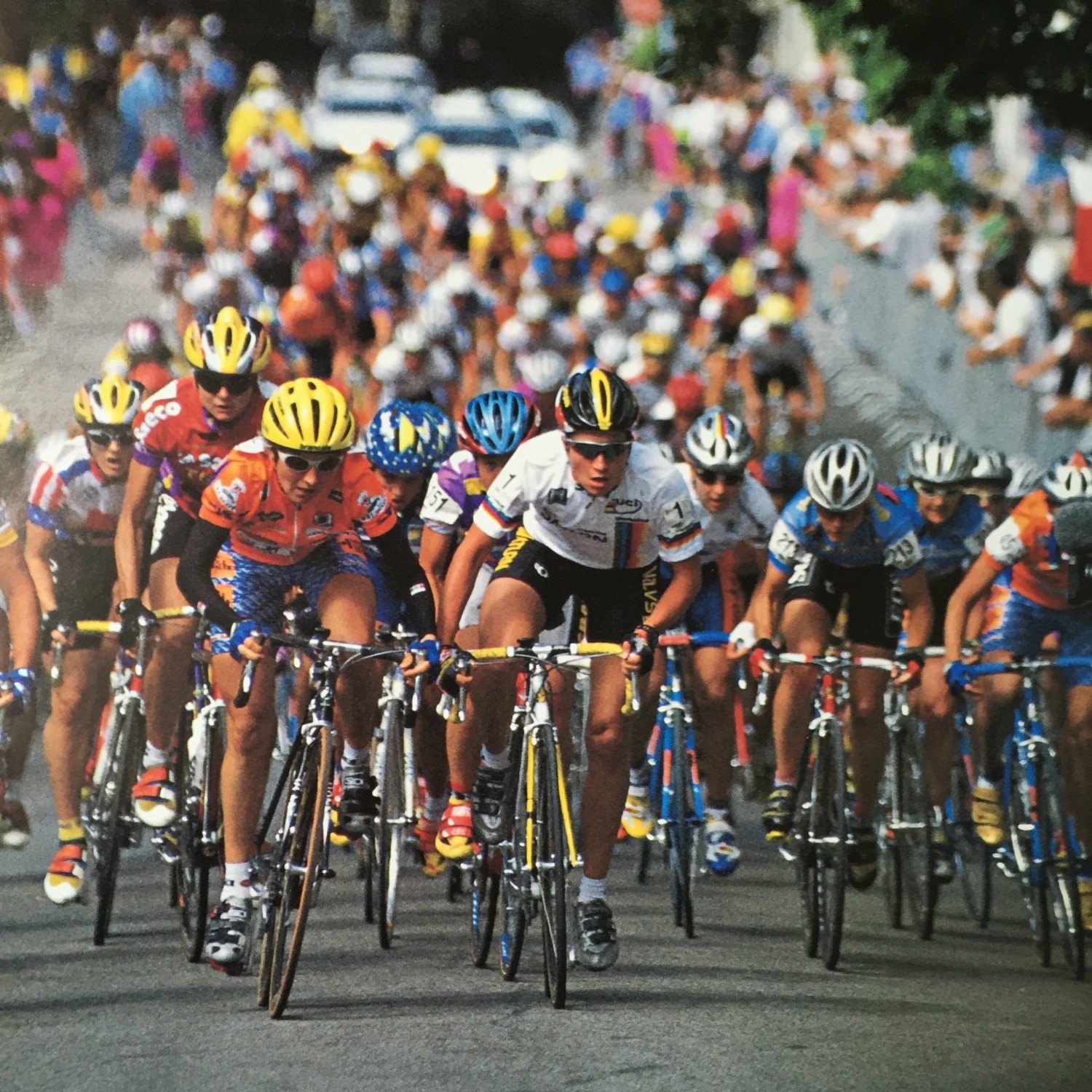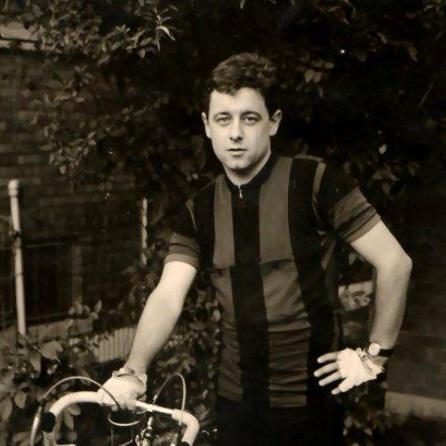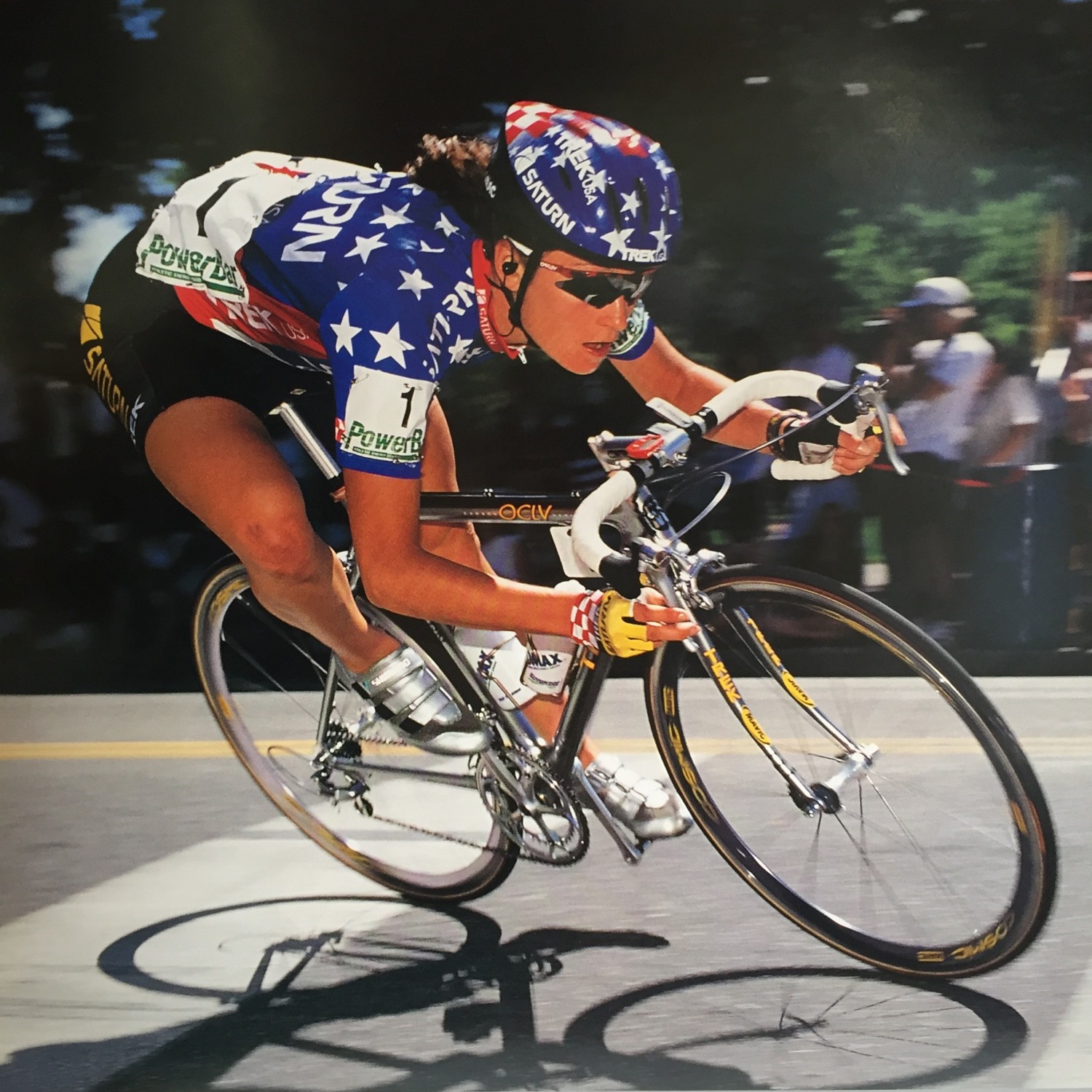By Dede Barry
Photography by Casey Gibson
Passing the barriers neatly placed on each corner, I walked with my Father and dog on a humid summer evening to the Lixx custard shop on Downer Ave. It was the eve of the annual Downer Avenue Criterium, a race that looped around a few neighbourhood streets two blocks from my house. The course was lined with fans with beers or sodas grasped firmly in hand. From their front lawns some watched while others tended the barbeques that billowed clouds of sweet smoke. Later into the evening, as the sun set, I would race. Envisioning the lines I would take through the tight corners, and where I might launch an attack, I had butterflies in my stomach. Neighbours, family and friends were out to watch. This was not only a bike race but also a community festival. As the night wore on, the crowd became more animated, and the ambiance vibrant.
Fueled with a hamburger and ice cream, I was prepared to race. Ready to cheer me on, my brother backed his pick up truck to the north corner of the circuit with the flat bed full of beer on ice. My uncle handed me a ‘lucky’ pink rabbit’s foot he found in the street. I slipped it in my back pocket of my racing jersey.
An hour or so later, the gun fired and we were off, racing around the four corner circuit at speeds of 40-50km per hour. Under the setting sun our shadows grew longer as we accelerated out of the corners. The crowd bellowed louder with each lap as we sprinted for the intermittent, and sometimes lucrative, primes. In a bunch of a hundred plus riders that is speeding through neighbourhood streets lined with ebullient fans, a cyclist will grow wings.
The criteriums of Superweek in Milwaukee, were not only the first races I watched but also the first races I rode. As a young girl, I stood in front of my home with the hose in my hand to spray the cyclists as they climbed up from the shores of Lake Michigan passed my house. When I saw my childhood idol, Olympic Medalist Eric Heiden speed by, I knew it was a sport I wanted to try.

Dede Barry racing a criterium in Superweek, 1989
Although Criterium racing originated in Europe, it has stolen the hearts of American cyclists and cycling fans. Criteriums are short circuit races, usually +/- 1 kilometer in length that engage the crowd as the riders whizz past dozens of times. Often, the races take place during a community festival. In Europe, there are often Ferris wheels and other amusement park rides swirling around the course. Children line up at treat stands, adults stand around eating brats and sipping on beers, while the announcer introduces the riders and provides commentary over the P.A throughout the races.
In the last forty years, criteriums have become the most common type of bicycle racing in North America as they do not require a large amount of space or resources to organize. They also tend to offer an excellent return on investment for local businesses, as they can attract thousands of spectators.
Due to the shorter distance of criteriums, and the compressed nature of the races, the average speed is normally high from start to finish. The fight for the front of the peloton is always fierce, as position is key on a course with many corners. The circuits are technical by design as they usually include at least four corners. The peloton rides tightly together, as riders either fight to stay tight in the draft, or battle for the front. Every block, the riders jump out of their saddles to reaccelerate out of the corners or sprint for the midrace primes (which are often made up of cash collected from fans or products donated by community businesses). It makes for a more intense and exciting spectating experience than that of a traditional road race — which can last many hours, sometimes over the course of several days or even weeks, as in a Grand Tour like the Tour de France. In a criterium there are few moments where the peloton rolls along chatting. More often, they are bumping elbows, yelling at their rivals and teammates, and grimacing as they fight to move up, break away, or sprint for the line.

Dede Barry leading the peloton in the World Cup Leader’s Jersey, 1998
Success in criteriums requires a mix of technical skills — in particular, the ability to corner, sprint, maneuver in a large peloton, and strategize. By racing the criterium in Milwaukee and Chicago, I developed skills from a young age that helped me win races internationally, as a crit is rarely won by pure strength or speed. A combination of tactical skills and fitness are needed to win.
But, more than anything else, those races gave me great memories: my childhood friend Jeannie cheering from the sidelines, my father watching from our lawn, racing for the first time in jelly shoes and a t-shirt, the taste of a cold drink after a stinking hot race in the summer of ’95, and racing into the final lap, the bell ringing with my teammate Karen Bliss, on my wheel who poised to win the sprint and race.
Superweek and the Downer Classic, was founded by Wisconsin Cycling legend Otto Wentz in the 1960s. The criterium series attracted cyclists from around the world. Otto was a former racer and visionary, who had an incredible impact on cycling in the USA. He died in January 2016, but the format and the classic races of Superweek are as popular as ever. Now named the Tour of America’s Dairyland and organized by Tom Schuler, Billy Ochowitz and Jim Michler.

Otto Wentz, Founder of Superweek and the Downer Classic
After many years of very little bike racing in central Toronto, we were excited to hear that there is a new OSS Fest criterium scheduled for July 23 on Ossington street. Mariposa will have a few riders at the start line and we hope you all come out to cheer on the riders and toast them with a beer or glass of cava at Cote de Beouf or Union.
